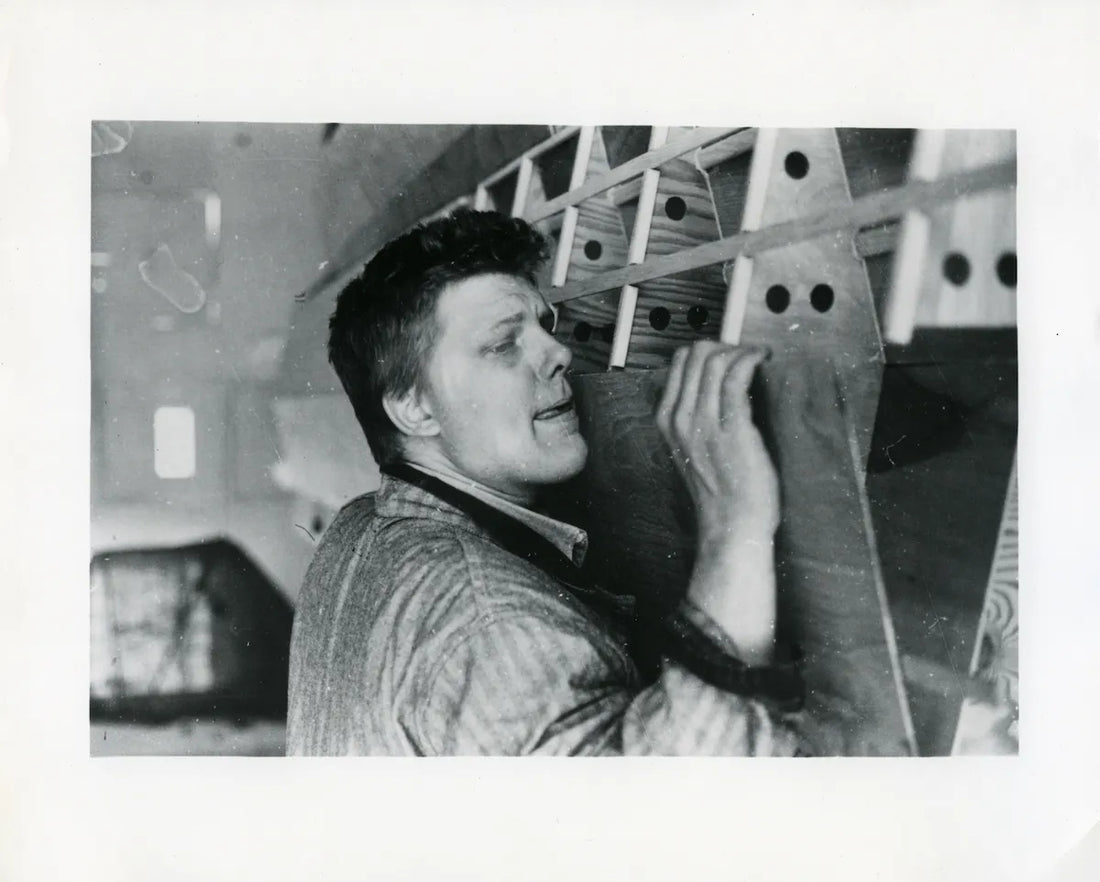
Robert Grosvenor, Trailblazing Sculptor of Minimalism and Spatial Innovation, Dies at 88
Share
Robert Strawbridge Grosvenor, a pioneering American sculptor whose work helped define and expand the boundaries of minimalism, passed away at age 88 in New York City. Known for his monumental and architectural sculptures that transformed industrial materials into evocative spatial experiences, Grosvenor’s influence spanned over six decades. His passing marks the loss of a visionary artist who bridged abstraction, architecture, and tactile craftsmanship.

Early Life and Artistic Formation
Born in New York in 1937 and raised between Rhode Island and Arizona, Grosvenor trained extensively in Europe, studying at the prestigious École des Beaux-Arts de Dijon, the École nationale supérieure des arts décoratifs in Paris, and the University of Perugia. He moved to Philadelphia in 1960 and later became a key figure in New York’s Park Place Gallery, a cooperative known for its experimental and minimalist leanings.

Defining Minimalism with Architectural Sculpture
Grosvenor’s breakthrough came with his sculpture Topanga (1965), first exhibited at Park Place, which powerfully exemplified his interest in the relationship between objects and their surrounding space. His early inclusion in seminal exhibitions like Primary Structures at the Jewish Museum in 1966 and Minimal Art at the Gemeentemuseum Den Haag in 1968 cemented his role as a defining figure in minimalism.
His signature use of industrial materials—steel, fiberglass, wooden beams treated with creosote—combined with geometric precision, created works that hovered between sculpture and architecture. The reflective cantilevered piece Tenerife (1966) exemplified his ability to transform raw materials into works that engage viewers spatially and perceptually.

Later Work and Expanding Artistic Boundaries
In subsequent decades, Grosvenor’s practice evolved to integrate found objects and forms inspired by everyday objects like boats and cars, reflecting his time living in the Florida Keys. His later works combined abstract geometry with playful, often ambiguous forms that challenged viewers’ expectations.
Throughout a prolific career, Robert Grosvenor held retrospectives and solo exhibitions worldwide, including prestigious venues such as the Museum of Contemporary Art, Chicago, Kunsthalle Bern, and the Institute of Contemporary Art, Miami.

A Lasting Legacy in Major Collections
Grosvenor’s work is held by leading institutions including the Museum of Modern Art, New York, Whitney Museum of American Art, Storm King Art Center, and the Centre Pompidou, Paris. Through these collections, his artistic exploration of spatial dynamics continues to inspire and influence new generations.

Image Sources and Keywords
-
Photographs of Topanga (1965) and Tenerife (1966), reflecting Grosvenor’s minimalist sculptural approach.
-
Visual archives of the landmark Primary Structures exhibition at the Jewish Museum.
-
Images from recent solo exhibitions at Paula Cooper Gallery and international institutions.
-
Portraits and candid photos of Robert Grosvenor throughout his career.
Effective Anchor Text Links Embedded in Content
-
pioneer in minimalism and architectural sculpture
-
displayed in Primary Structures at the Jewish Museum
-
innovative works at Park Place Gallery
-
use of industrial materials like fiberglass and creosote
-
retrospectives at Museum of Contemporary Art, Chicago
-
lasting impact on collections such as the Museum of Modern Art, New York and Whitney Museum of American Art
FAQ
Who was Robert Grosvenor?
An American sculptor born in 1937, Robert Grosvenor was a key figure in defining the minimalist movement through his expansive and spatially engaging sculptures.
What are some of Grosvenor’s most famous works?
Topanga (1965) and Tenerife (1966) are among his landmark sculptures showcasing his signature use of industrial materials and exploration of space and form.
How did Grosvenor contribute to minimalism?
His inclusion in the groundbreaking Primary Structures exhibition helped define minimalist sculpture, and he continued to expand the movement through innovative use of materials and ambiguous forms.
Where has Grosvenor’s work been exhibited?
He held exhibitions worldwide, including at the Kunsthalle Bern, ICA Miami, Museum of Contemporary Art Chicago, and major retrospectives at galleries like Paula Cooper.
In which major collections can Grosvenor’s works be found?
His works belong to prominent institutions such as the Museum of Modern Art in New York, Whitney Museum of American Art, Storm King Art Center, and Centre Pompidou in Paris.
